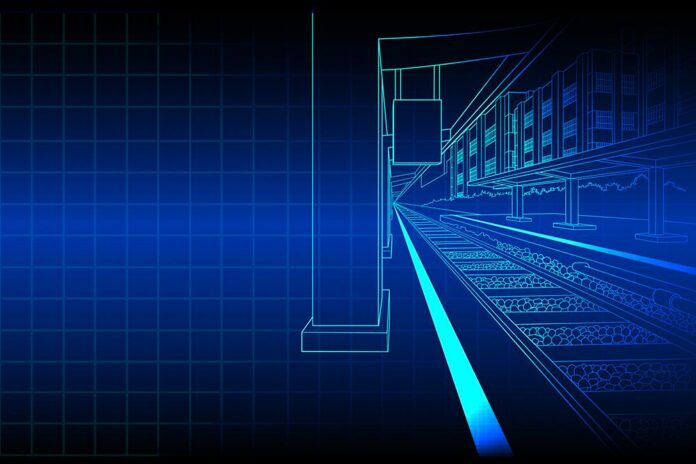The penultimate day of the Unlocking Innovation – Digital Railway – The Future webinar series took place on 2 July and focused on innovations which could allow digital railway to deliver even more benefit for customers.
Degraded Mode Working System
The session opened with Karl Butler-Garnham, R&D Programme Manager at Network Rail who took delegates through the development of the Degraded Mode Working System (DMWS) which is an independent system to provide a movement authority to the train driver via cab radio if the primary signalling system fails, restoring the service quicker than is possible with manual methods.
DMWS is part of Network Rail’s Research & Development Portfolio – a £245 million investment programme over CP6 to drive improvements to the safety, performance, and efficiency of Britain’s railway infrastructure. Network Rail is already working with two train operators and a range of suppliers to develop this system and the final major procurement activity for the Trackside Inhibit, Detect and Repeat (IDR) equipment will be launched this month (July).
Even the procurement will be innovative, using the Innovation Partnership Procedure which will allow up to five suppliers to develop concept designs before up to two are taken forward to develop a prototype, with successful trials leading to a framework for deployment – without a further procurement process.
Accelerating Digital Railway Benefits
Butler-Garnham was followed by his Network Rail colleague Andrew Simmons, Chief Systems Engineer, Digital Railway, who outlined how the Rail Technical Strategy and NR R&D Programmes enable and may accelerate the benefits of Digital Railway. The refresh of the Rail Technical Strategy (RTS) reflects the need to increase the pace of technology adoption given the challenges and opportunities that rail faces. The RTS will focus on five priorities – ensuring rail is easy to use for all, is low emission, provides optimised train operations, is reliable & easy to maintain and, finally, is data driven.
Simmons then gave four practical examples where this increased pace can accelerate the benefits of Digital Railway – Hybrid ETCS Level 3 which has already being trialled, Automatic Train Operation (ATO) where the positive lessons from Thameslink have led to new specifications, ETCS Level 2 limited supervision, which is moving into prototype phase and allows performance and safety benefits for ETCS fitted trains on infrastructure which is not yet ETCS fitted. Finally, looking to the future, Simmons presented an Integrated Technical Demonstrator covering moving block, future communications and train integrity starting in the UK in November. Given that any one of these initiatives is world leading, the UK can be genuinely proud of its signalling innovation.
Simulated Environment
Prof. Clive Roberts, Head of the School of Engineering and Director of the Birmingham Centre for Railway Research and Education (BCRRE) and Andrew Hunter, Head of Technical Solutions Digital at Thales, detailed their work on a joint development between academia and industry as part of the Sector Deal to automate and accelerate the process of signalling design.
They explained the potential for simulated environments to enable design, testing and authorisation for deployment, reducing the need for costly and time-consuming on-site testing and commissioning. They emphasised the value of a coordinated, cross-industry approach to simulation and validation, adding that they have confidence this is achievable as other industries have made significant progress and there are already examples of many of these aspects in the rail industry.
These examples include signalling suppliers using models for system testing and verification, as well as the West Midlands Railway Digital Twin currently under development, which will support the introduction of a new timetable in 2021.
The Rail Sector Deal – Data Pillar (Data: The Art of the Possible)
James Bain, CEO of Worldline UK&I presented the Data Pillar of the Rail Sector Deal for which he is Industry Champion. The aim of the Data Pillar is to make commercial rail data more available, enabling innovation and customer focused products and services.
Bain stated that the changes in the railway caused by the Coronavirus crisis brings opportunities just like any other crisis. The first opportunity is faster execution on industry policy evolution to create an Open Data strategy. This will be facilitated by a review underway on the Legal and Commercial principles for open data to be included in future procurements and retro fitted to existing contracts. It is anticipated this will lead to faster innovation and will lower the barriers to entry into the industry. Bain emphasised that the industry mantra must always be’ customer, customer, customer’.
Conclusion
In summary the event showcased a range of genuine innovations and gave attendees insights on how data, information and simulation can deliver further benefits to the railway and thought-provoking comments on how data can make a difference post Coronavirus.
Photo credit: Railway Industry Association



































 0113 2082620
0113 2082620 info@railbusinessdaily.com
info@railbusinessdaily.com 15 Mariner Court, Wakefield WF4 3FL
15 Mariner Court, Wakefield WF4 3FL

